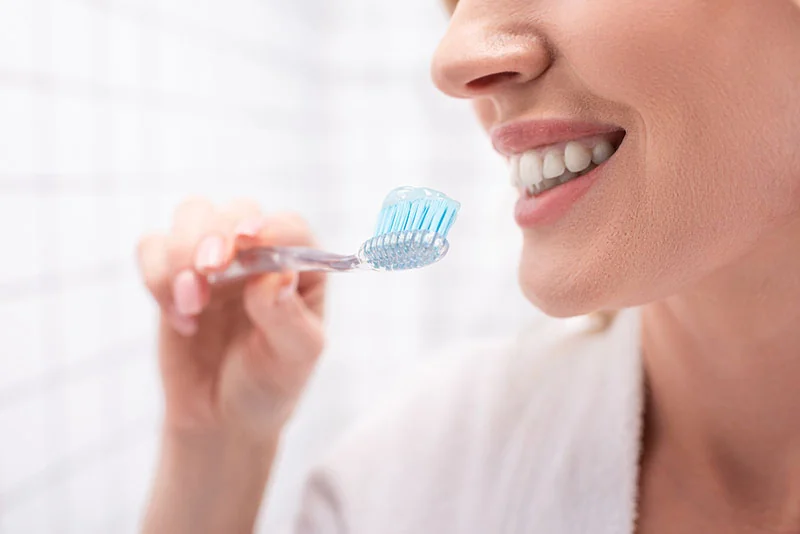
Whitening toothpaste is an easy & accessible way to whiten your teeth while doing something you already do regularly—brushing your teeth! Let’s explore how whitening toothpaste works to brighten your smile.
How Teeth Get Stained
To understand how whitening toothpaste works, we first need to explain how teeth become stained or yellow. Though they look smooth, teeth actually have microscopic “pores” that can hold onto the staining compounds in certain foods & drinks, causing them to brown or yellow over time.
What Whitening Toothpaste Does
All toothpastes work by using a mild abrasive, the most common of which is baking soda, to help remove plaque & debris. However, whitening toothpastes go one step further with a stronger abrasive that removes microscopic layers of tooth enamel, thereby removing the stains on the enamel.
Like other whitening treatments, whitening toothpaste is only effective on natural teeth. Fillings, crowns & veneers won’t react the same way to whitening toothpaste or bleaching chemicals as your natural tooth enamel.
Some newer whitening toothpastes use activated charcoal, but these toothpastes haven’t been thoroughly tested yet, & the abrasives might be too tough on your teeth. We recommend sticking to traditional whitening toothpastes as there isn’t enough evidence to support these products yet.
The Results
If this sounds like whitening toothpaste can be rough on your tooth enamel, you’re right. Although it can remove surface stains, whitening toothpaste isn’t recommended for people who already have weak enamel or sensitive teeth, because the extra abrasiveness of the toothpaste can intensify these problems. If you start to experience tooth sensitivity after using whitening toothpaste, talk to your dentist about switching to a regular toothpaste or using a toothpaste for sensitive teeth.
Fortunately, there are other ways to whiten your teeth if whitening toothpaste is making your teeth too sensitive. Whitening treatments use chemicals like hydrogen peroxide to penetrate the “pores” in your tooth enamel & dissolve tooth stain compounds. As a result, these treatments can whiten your teeth more than whitening toothpaste, which only removes surface stains on your enamel. Whitening treatments available from dentists have a higher concentration than take-home whitening products, but both can whiten your teeth several shades more than whitening toothpaste.
Whether you’re thinking about using whitening toothpaste or an in-office or take-home whitening treatment, talk to your dentist to discuss which option is best for you.
